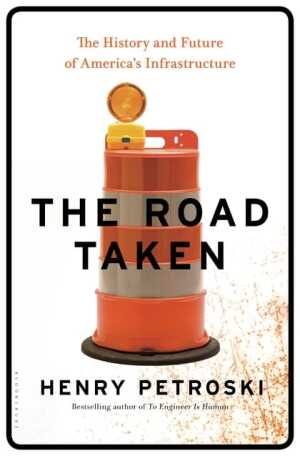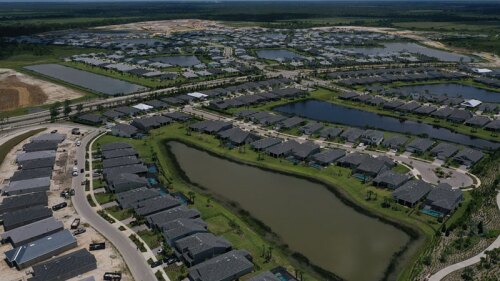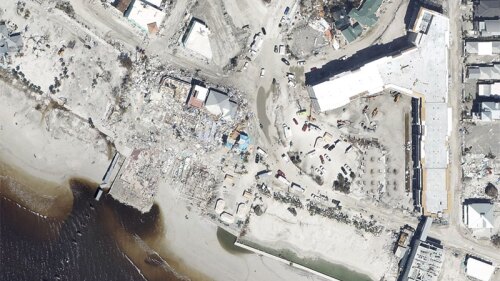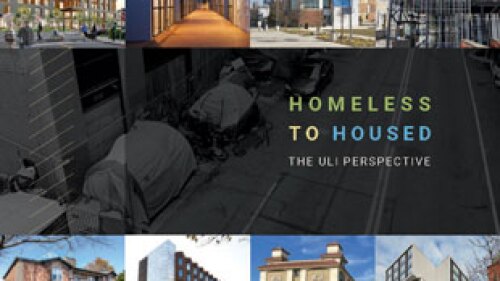The Road Taken: The History and Future of America’s Infrastructure
Henry Petroski
Bloomsbury Publishing
1385 Broadway, Fifth Floor, New York, NY 10018
http://www.bloomsbury.com
February 2016. 336 pages. Hardcover, $28.
The word infrastructure, which originated during the 1920s, was unusual enough to still appear in quotation marks in the Wall Street Journal as late as the 1980s; it is a good question whether it would have entered the linguistic mainstream if it knew the vast burden of meanings it would soon be shouldering. Henry Petroski’s The Road Taken: The History and Future of America’s Infrastructure is an exhaustive tour of the tremendous variety of built works encompassed by the term.
Infrastructure is, of course, proverbially invisible until it breaks, but many of its elements are not considered even then. Take the road—you often do.
“The parts of roads that are often overlooked: their seams and their edges, their potholes, and their fringes. The centerlines, curbs, and gutters are considered, as are guardrails and medians, road signs, and traffic signals. These finishing details of the hardware are complemented by the software represented by the conventions of driving and the rules of the road, which are also treated in the book. These intangible adjuncts to highway infrastructure are every bit as important as are the tangible grade, bank, and curve of the pavement in making it safe and efficient to ride upon.”
The development of road surfaces themselves may be familiar: other elements likely are not. Some road design innovations date from the Roman Empire; contingent elements of road use we take for granted are often shockingly recent. The first center white line dates from 1917. An Illinois State Court ruled stop signs illegal as late as 1922. Fifth Avenue in Manhattan was once lined with manually operated traffic lights, with an officer at each corner.
The history of American infrastructure is one of both constant duress and frequent ingenuity, with the former predominating but enough of the latter to prevent complete despair, just as its averted likely collapse at many points in the past.
Letter-grade reports on the state of U.S. infrastructure from the American Society of Civil Engineers (ASCE), issued occasionally since 1998, profile a student that is increasingly making only the barest efforts not to fail completely, earning D averages in a majority of categories: when your strongest grade (a B–) is in solid waste disposal, something is going wrong. ASCE’s estimate of the resources needed to maintain American infrastructure by 2020 is $1.1 trillion. By 2040, it rises to $4.7 trillion.
The temptation toward hopelessness is real, especially since deficient infrastructure often requires the jolt of actual tragedy to attract even partial remedy: a bridge collapse should not be required to get bridges repaired that were already deficient by every official measure. The author’s history offers some measure of encouragement, however. While the character of infrastructure maintenance is more often triage than touchup, the constant need to maintain built works at every level of government does offer countless laboratories of innovation that have delivered dramatic improvements to the design of public works. Breakthroughs in one location have often become standard elsewhere.
Engineers will continue their admirable work: it remains for the rest of us, as Petroski urges, to “act decisively to align America’s infrastructure with its aspirations.”





